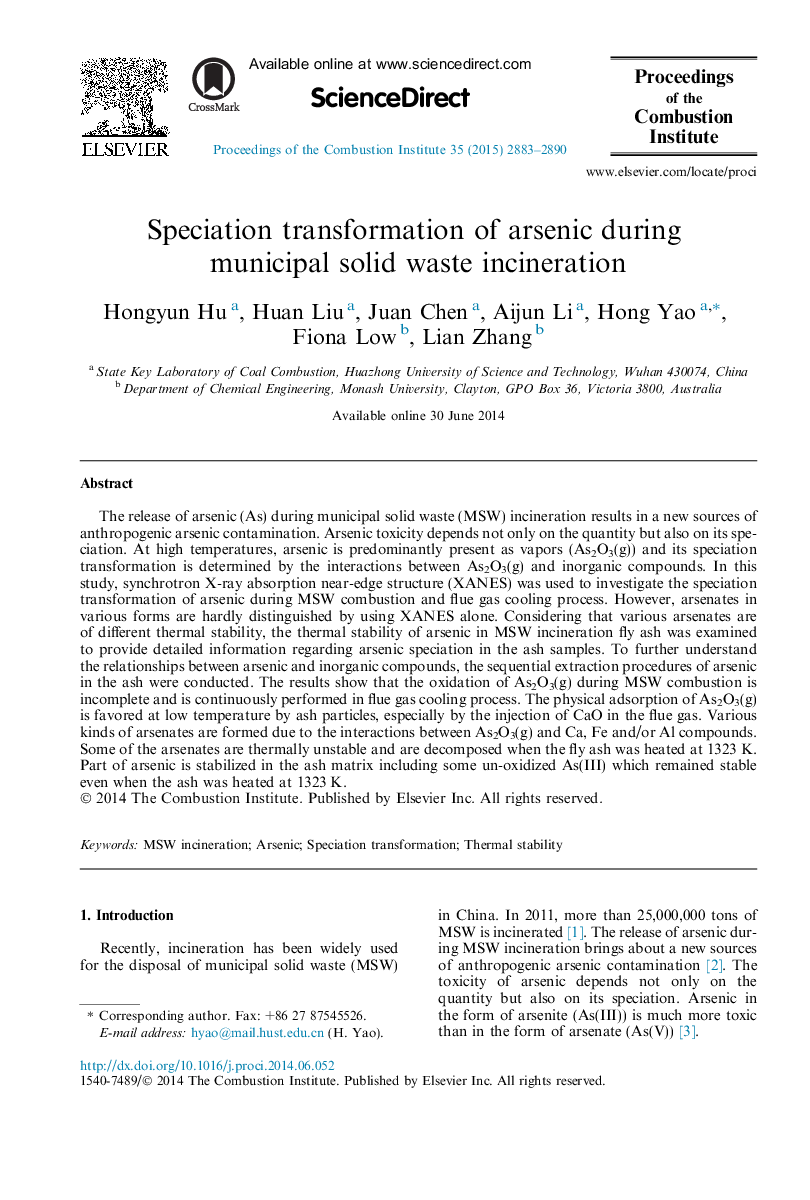| Article ID | Journal | Published Year | Pages | File Type |
|---|---|---|---|---|
| 4915539 | Proceedings of the Combustion Institute | 2015 | 8 Pages |
Abstract
The release of arsenic (As) during municipal solid waste (MSW) incineration results in a new sources of anthropogenic arsenic contamination. Arsenic toxicity depends not only on the quantity but also on its speciation. At high temperatures, arsenic is predominantly present as vapors (As2O3(g)) and its speciation transformation is determined by the interactions between As2O3(g) and inorganic compounds. In this study, synchrotron X-ray absorption near-edge structure (XANES) was used to investigate the speciation transformation of arsenic during MSW combustion and flue gas cooling process. However, arsenates in various forms are hardly distinguished by using XANES alone. Considering that various arsenates are of different thermal stability, the thermal stability of arsenic in MSW incineration fly ash was examined to provide detailed information regarding arsenic speciation in the ash samples. To further understand the relationships between arsenic and inorganic compounds, the sequential extraction procedures of arsenic in the ash were conducted. The results show that the oxidation of As2O3(g) during MSW combustion is incomplete and is continuously performed in flue gas cooling process. The physical adsorption of As2O3(g) is favored at low temperature by ash particles, especially by the injection of CaO in the flue gas. Various kinds of arsenates are formed due to the interactions between As2O3(g) and Ca, Fe and/or Al compounds. Some of the arsenates are thermally unstable and are decomposed when the fly ash was heated at 1323Â K. Part of arsenic is stabilized in the ash matrix including some un-oxidized As(III) which remained stable even when the ash was heated at 1323Â K.
Related Topics
Physical Sciences and Engineering
Chemical Engineering
Chemical Engineering (General)
Authors
Hongyun Hu, Huan Liu, Juan Chen, Aijun Li, Hong Yao, Fiona Low, Lian Zhang,
